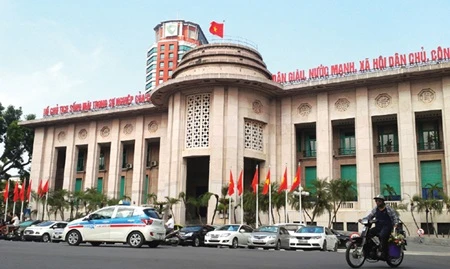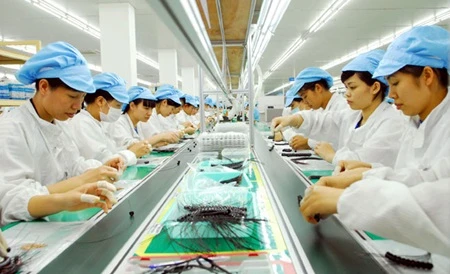Hanoi (VNA) – The State Bank of Vietnam (SBV) is to actively implement flexible monetary policies to help the country control inflation, maintain macro-economic stability and accelerate economic growth this year.
The Government has tasked the SBV to ensure this following a resolution on socio-economic development plans in 2016, in tight conjunction with ministries and relevant agencies.
It emphasised that exchange rate policies must stabilise the foreign currency market, and interest rate operations are to foster lending growth and quality. That required strict control of loans allocated in high-risk areas, such as real estate and investment projects breaking even in a long period of time.
It asked the central bank to intensify foreign currency and gold trading and continue to improve the national foreign reserve, besides stimulating non-cash payment.
Also, the SBV must closely observe developments in international monetary and financial markets to take suitable action against negative impacts that global economic integration may have on the domestic market.
Comprehensive reorganisation of credit institutions is to be continued to enhance their financial capacity and operational efficiency, and consolidate their security. Drastic intervention of the government is needed for thorough handling of fragile institutions.
Spontaneous mergers and acquisitions, reduction in the cross ownership, and divestments from non-core lines of business are encouraged for credit institutions.
The capacity and resources of the national bad loan settling firm, Vietnam Asset Management Company, is to be improved to help maintain the overall ratio of bad debts below 3 percent of the total outstanding loans in the economy.
SBV Governor Nguyen Van Binh said on the sidelines of an online government conference recently late last month that the economic growth target of 6.7 percent this year might push inflation out of control.
Last year's inflation rate was mainly due to external factors, especially the falling global prices of oil and other staples. This year's inflation would be around 3 percent if those factors were excluded.
Binh asked ministries, sectors and localities to keep a firm grasp on prices, particularly essential goods, while affirming that the central bank would strive to maintain overall interest rates or cut down average medium to long-term lending rates by 0.3 percent to 0.5 percent.
Credit growth of less than 20 percent would match the targeted economic growth rate, he added.
On January 4, the central bank began setting the official reference exchange rate every day, instead of maintaining a fixed rate for a longer period of time. It believed that the new mechanism would enable it to ensure its management objectives, while letting the rate move flexibly as per global monetary fluctuations.
In its resolution, the government also said that monetary policies must be properly combined with fiscal and other macro-economic policies for quality and sustained development.-VNA

























